Not everyone thinks bugs are cute… but what about their babies?! Just like their vertebrate counterparts, baby bugs will often elicit an “awwwwwww!” Many of the residents of the Cockrell Butterfly Center’s insect zoo were bred and raised in-house (especially Orthoptera and Phasmida). Eggs are collected and incubated until tiny little babies hatch out. Their diminutive size makes them especially endearing.
Below are some of babies born and raised in the CBC.
Giant Long-legged Katydids (Arachnacris corporalis)
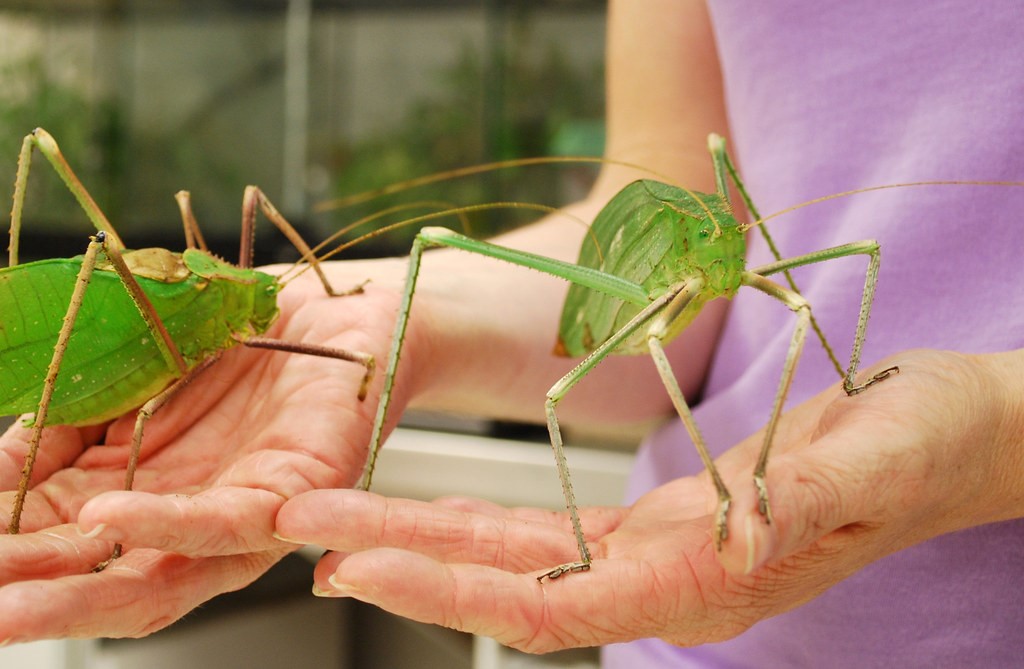
Giant Long-legged Katydids are native to the rainforests of Malaysia and are the largest species of katydid in the world. The females use their long, sword-like ovipositors to lay their eggs in crevices of branches. Their eggs bear a strong resemblance to wood splinters, so they often go undetected. Newly hatched babies resemble a bright green grain of rice with comically long antennae.
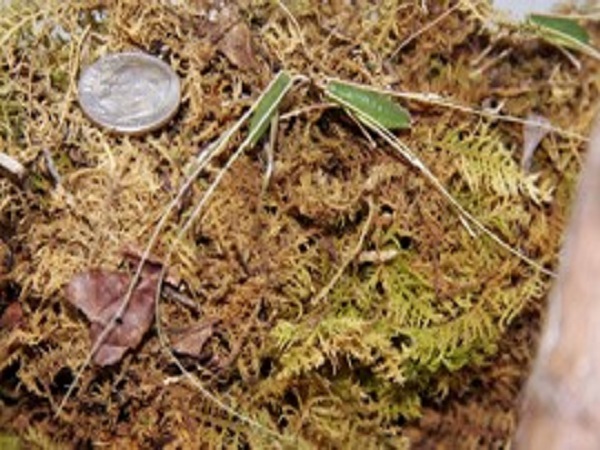
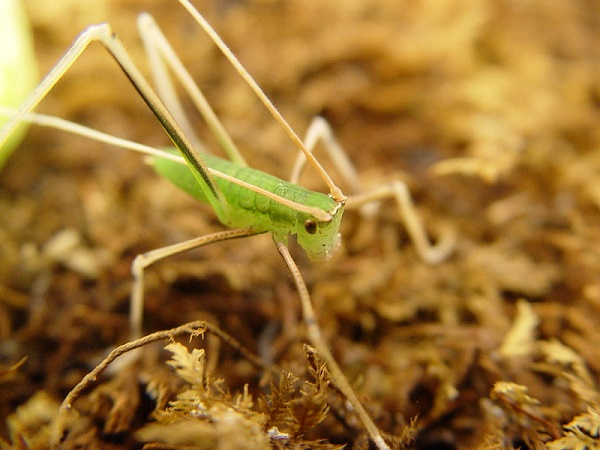
Giant Prickly Stick (Extatosoma tiaratum)
Giant Prickly Sticks are native to Australia. They have many interesting adaptations to avoid predation, one of which is curling up their abdomen to mimic the appearance of a scorpion. The female “flicks” her eggs, swinging her abdomen allowing the eggs to drop on the forest floor. The outside material of E. tiaratum eggs consists of lipids and other organic compounds that ants identify as food. They carry these eggs to their colony, consume the edible outer portion, and dump the intact eggs into their waste piles. Newly hatched E. tiaratum nymphs are ant mimics and resemble the insects in whose nest they are born. These nymphs are speedy, and quickly make their way to the trees.
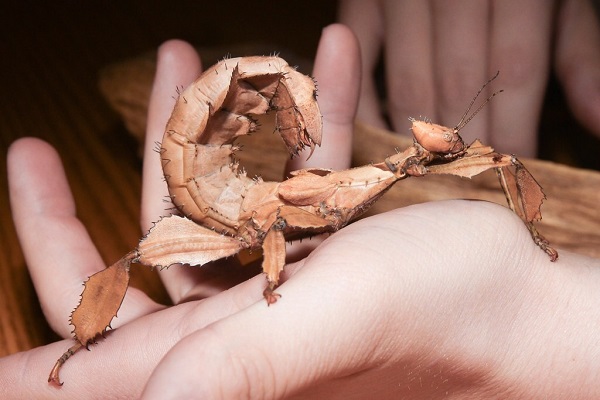

Giant Jungle Nymph (Heteropteryx dilatata)
Giant Jungle Nymphs are native to Malaysia and the females are one of heaviest stick insects in the world. The eggs of Heteropteryx dilatata are one of the largest laid by an insect, about 70 mg in weight. The females lay these individually in the ground with their ovipositor. After about 7 to 14 months, the nymphs hatch. While the color of the males becomes a little darker with each molt, the females change from beige to green after the third molt.

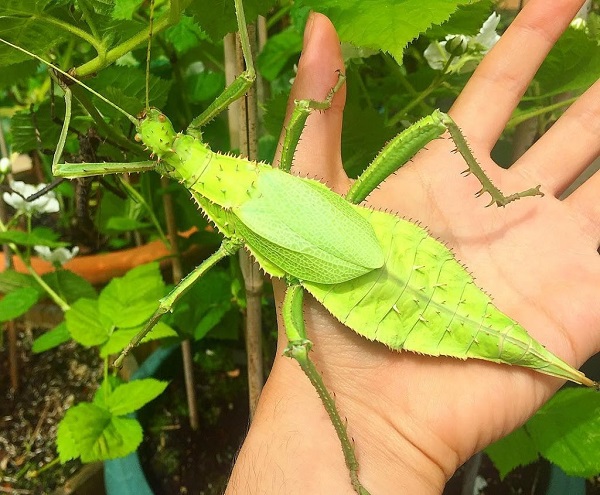
Black Beauty Walking Stick (Peruphasma shultei)
The Black Beauty Walking Stick is native to Peru where they are only known to exist in a region of less than 5 hectares, usually on volcanoes or mountains. The adults have bright red vestigial wings that they flash to warn away predators. Females simply drop their eggs onto the ground below. Newly hatched nymphs are completely black and will quickly make their way up into the foliage of nearby plants.

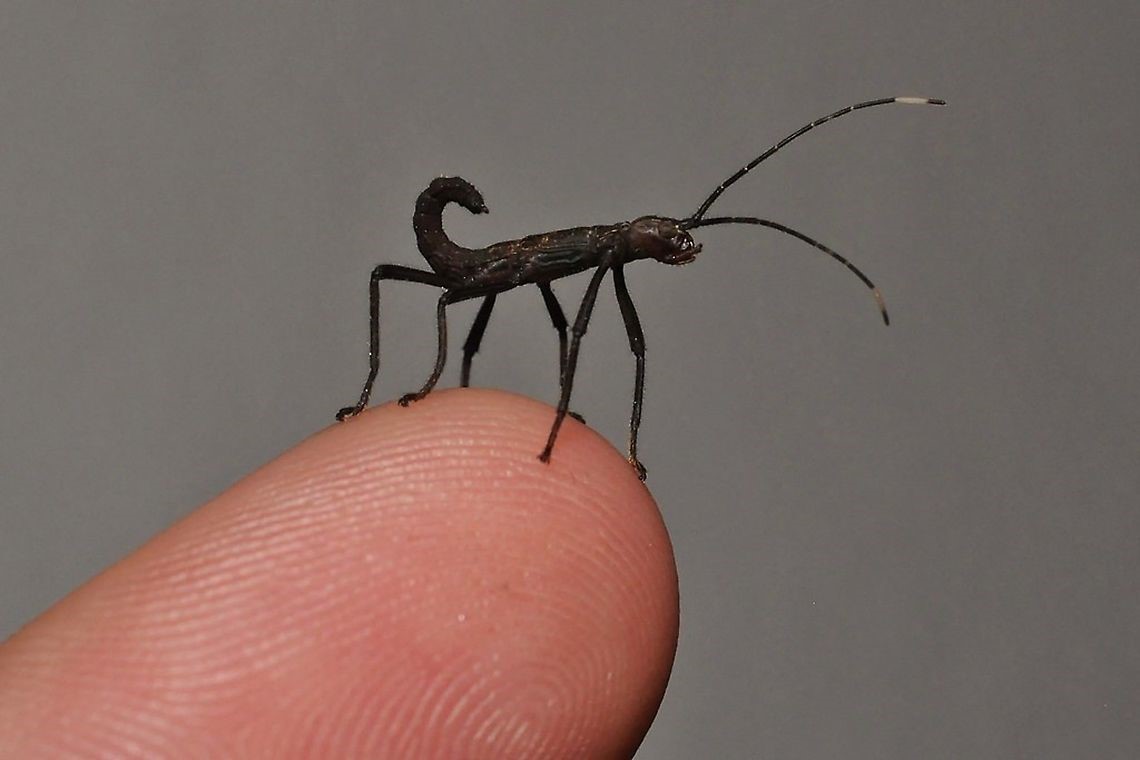
Cockrell Butterfly Center renovations may be stopping you from coming to us, but we can come to you! The Bug Loving doesn’t have to stop! With our Bugs on Wheels program, the CBC staff brings an array of specimens to introduce you to the wonderful world of insects, arachnids, and other arthropods. We offer several programs, each with a different emphasis. Learn more here.






